Façades Enriching the Lives of People and Cities
~The world’s one and only “face” of architecture innovated by engineering~
Scroll Down
Since ancient times, architecture has demanded strength, utility and beauty. Split into the areas of structure, facilities and design, the expertise in each of these segments has grown. In this modern age, the elements required of architecture, such as environmental and disaster prevention performance, have become even more diversified and specialized. As we turn our eyes outward, we are beginning to see challenging and complex architectural designs taking shape, with unprecedented free-form façades. But, with anything new comes risk. To ensure flexible responses to these kinds of demands from society, Nikken Sekkei established a Façade Engineering Department in 2016 to simultaneously create free-form architectural expressions tailored to different buildings and guarantee safety using the knowledge from various specialties.
Façade engineering: Connecting disciplines and benefiting all
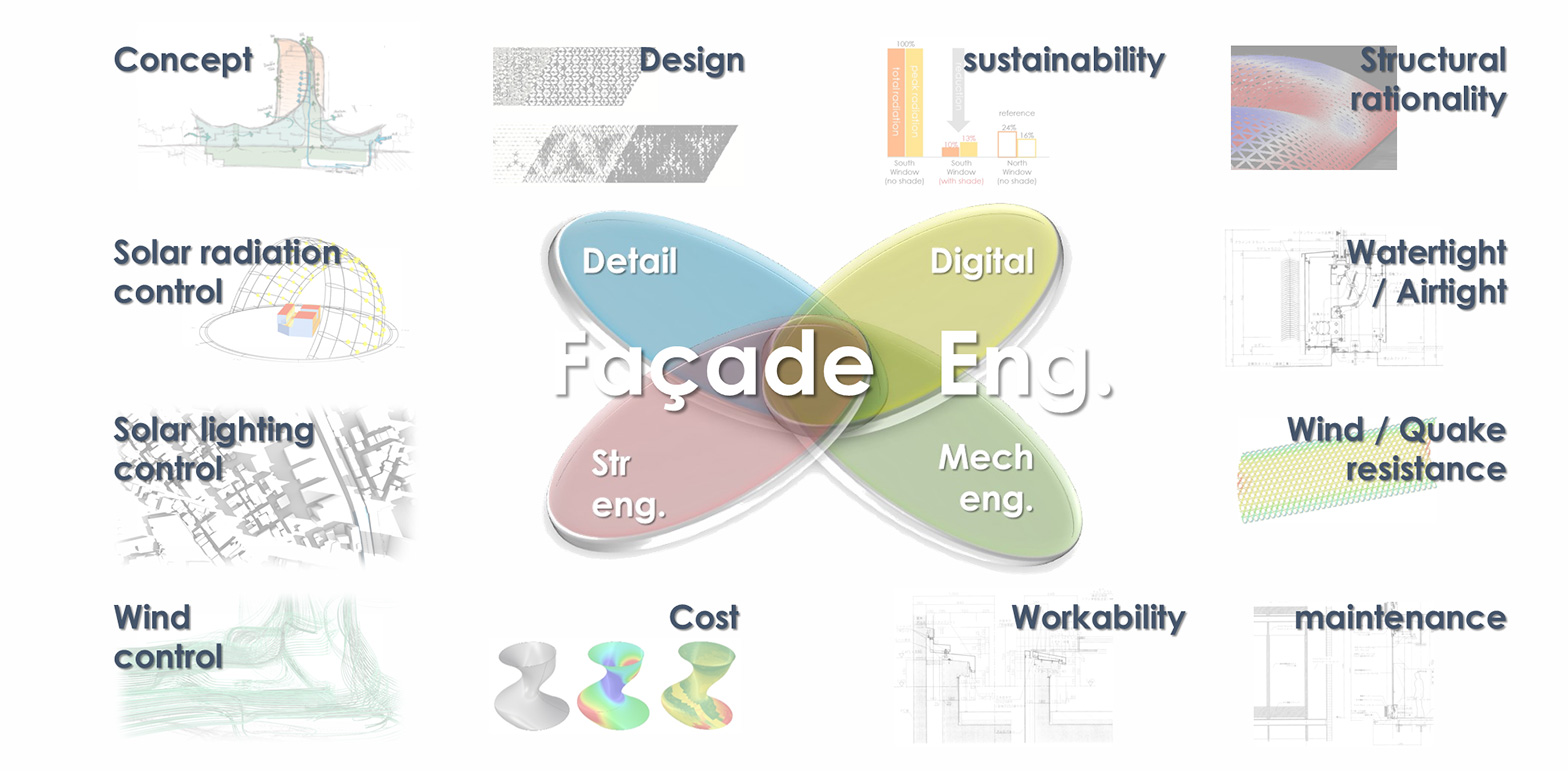 Different elements involved in architectural façades and the makeup of the Façade Engineering Department
Different elements involved in architectural façades and the makeup of the Façade Engineering Department
Hiroaki Murakami, Director of the Façade Engineering Department, describes the team’s role as one “connected to the creation of something tangible arising from conceptualization to simulation and analysis to strengthen rationality, verification of details, and selection of materials”. Murakami’s own area of expertise is in structural engineering, for which he has received the Japan Structural Design Award and the JSCA Award.
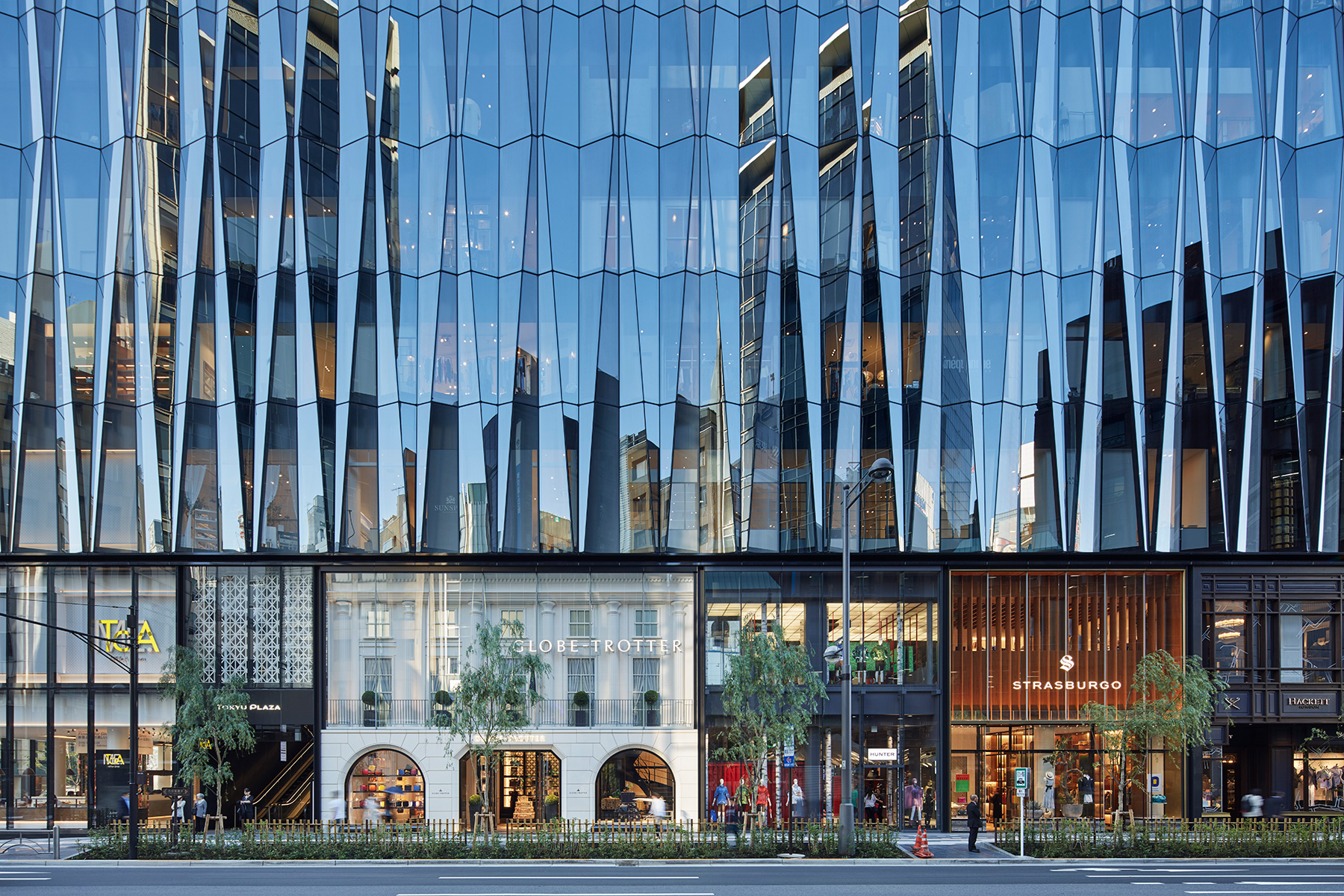 A unique façade sets the city aglow. (Tokyu Plaza Ginza, 2016; photo by Nacasa & Partners Inc.)
A unique façade sets the city aglow. (Tokyu Plaza Ginza, 2016; photo by Nacasa & Partners Inc.)
Orienting architecture from a total perspective using advanced information technology
 Simultaneous investigation into the structure and quantity of components for a roof
Simultaneous investigation into the structure and quantity of components for a roof
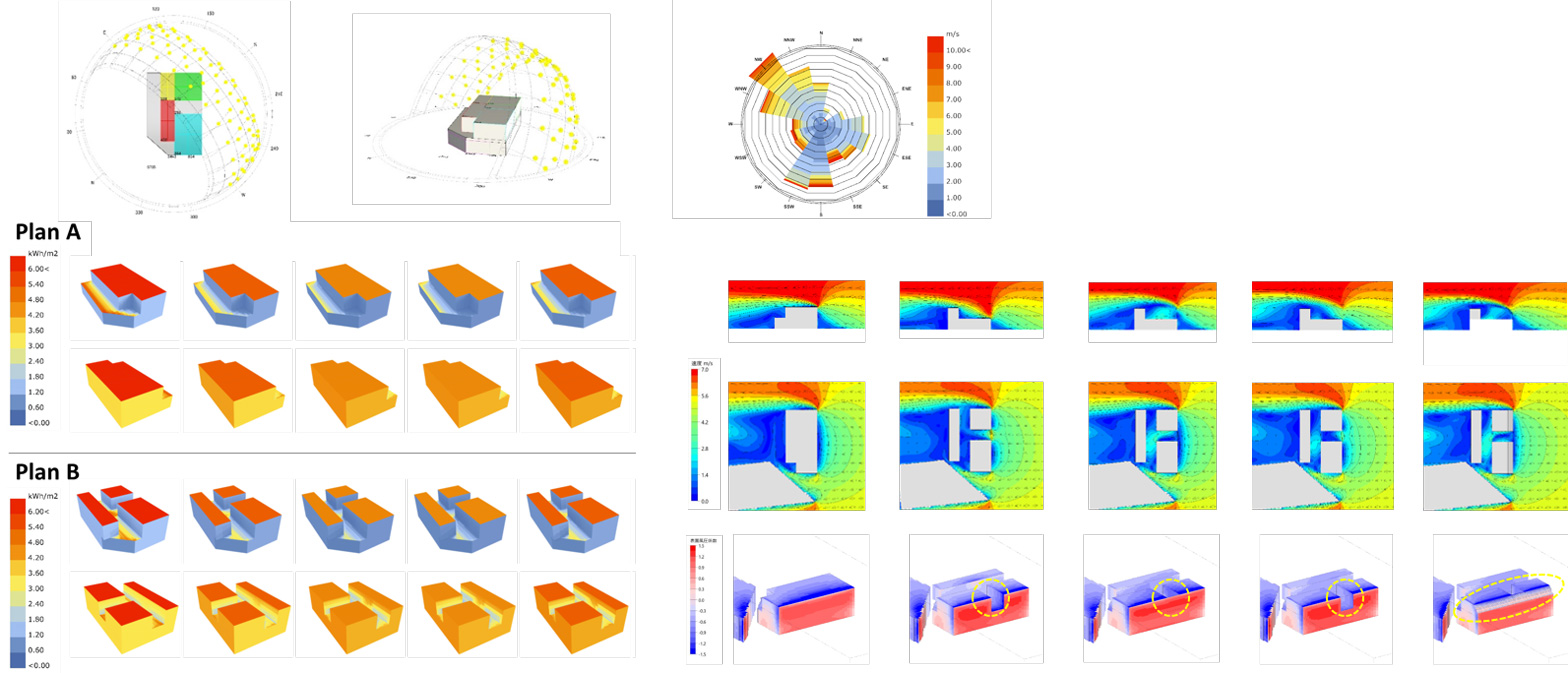 IT makes it possible to confirm the performance and impact of façades, taking time and the movement of the sun into account.
IT makes it possible to confirm the performance and impact of façades, taking time and the movement of the sun into account.
Mr. Murakami adds with some amusement, “Architecture is complex. The interesting thing about façade engineering is how to determine when the number of parameters increased.”
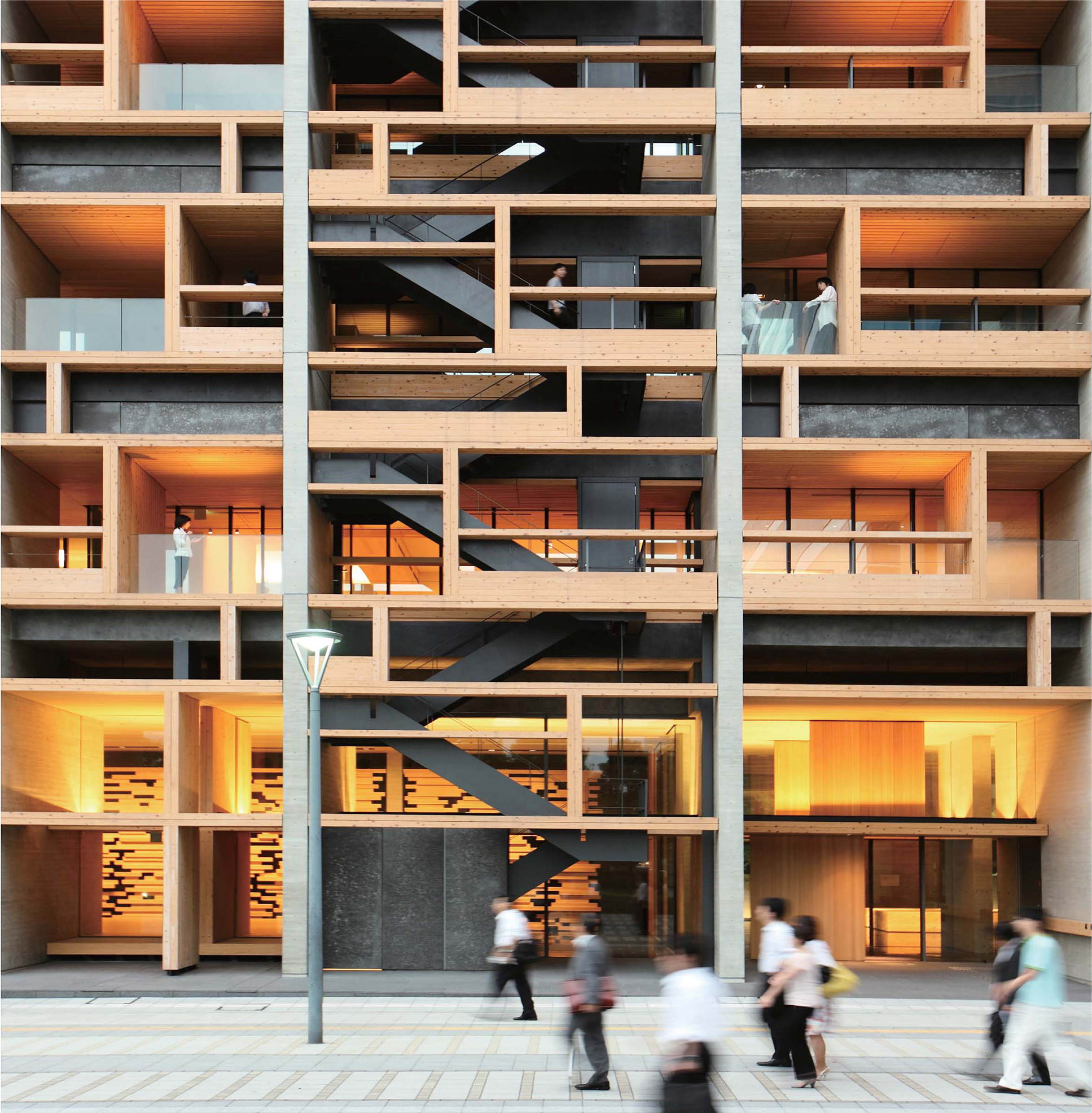 Façades, which function both as the face and shelter of a building, are designed rationally across a variety of specialized areas.
Façades, which function both as the face and shelter of a building, are designed rationally across a variety of specialized areas.
(Mokuzai Kaikan, 2009; photo by Harunori Noda [Gankosha])
Taking shape
For example, when considering designing a building with a complex curved form, the shape may be different in all places when curved sections are broken down into parts. In this case, a computer can analyze and fine-tune curved surfaces to reduce the type of parts and construct a surface with parts that are more workable, which in turn, makes it easier to construct. This is also one of the jobs of a façade engineer.
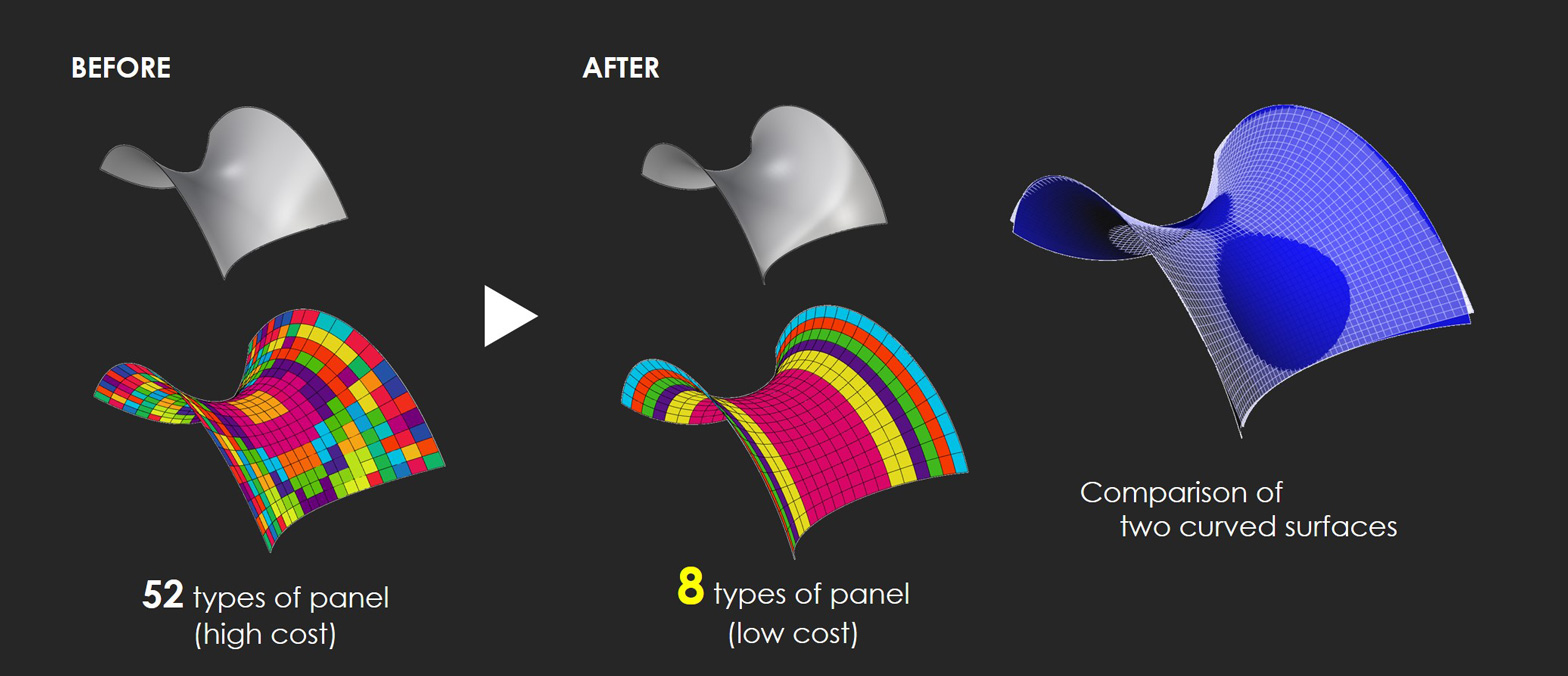 Costs and workability can be rationalized by reducing the pattern of components while maintaining the shape of the curved surface as much as possible.
Costs and workability can be rationalized by reducing the pattern of components while maintaining the shape of the curved surface as much as possible.
“Our team wants to act as a catalyst to successfully coordinate the various disciplines in Nikken Sekkei that have extensive specialized expertise”, says Murakami. The Façade Engineering Department is a hub that uses IT to rationally integrate ideas together from a variety of perspectives and expand the range of architectural possibilities.
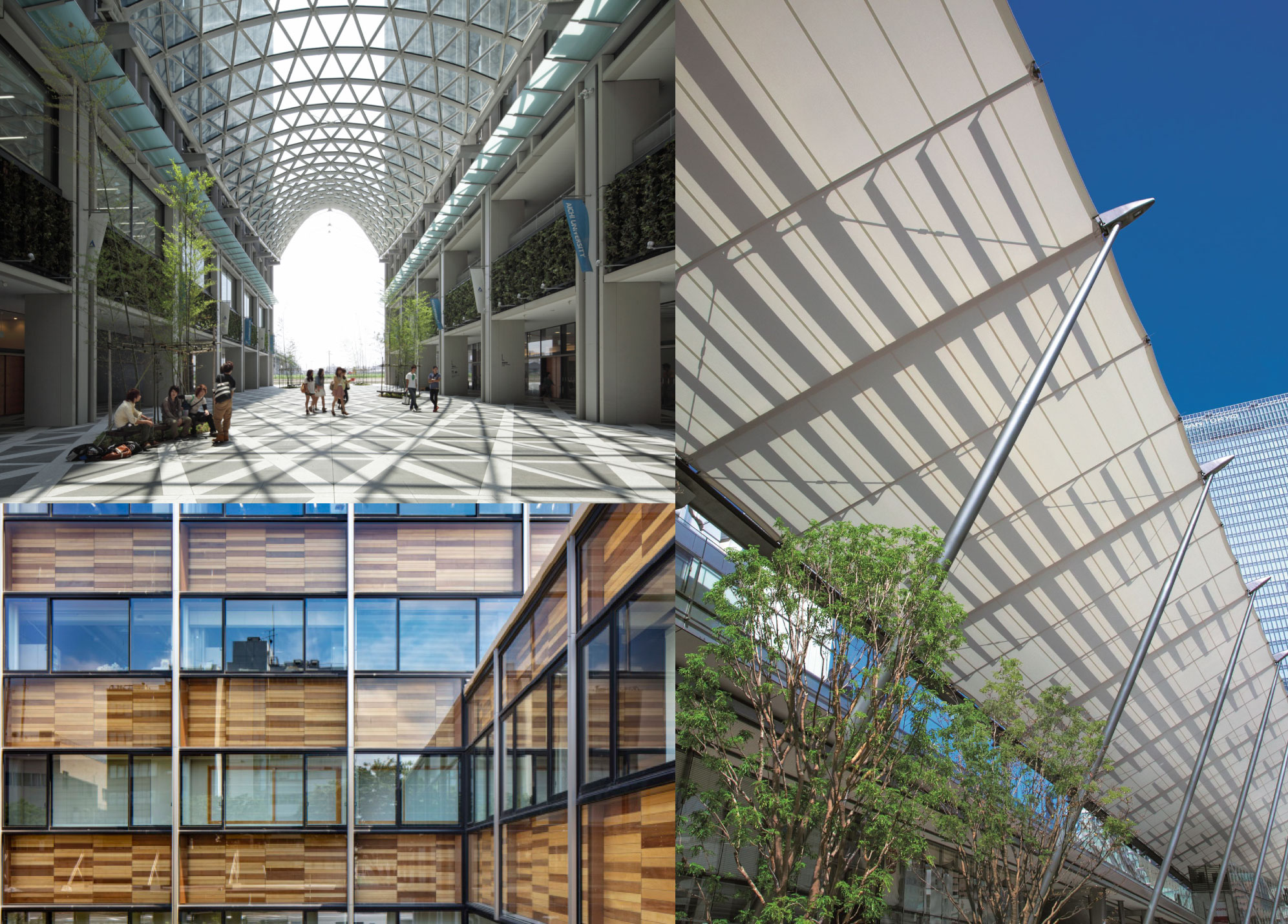 Façade engineering is used in a number of different situations, including in renovations of intimate exterior spaces and historical buildings.
Façade engineering is used in a number of different situations, including in renovations of intimate exterior spaces and historical buildings.
(Top left: Aichi University Nagoya Campus, 2012; photo by SS Co., Ltd. / Bottom left: Renovation of Aomori Prefectural Office, 2018; photo by Kindaikenchiku-sha / Right: Tokyo Station Yaesu Development - GranRoof, 2013; photo by Koji Horiuchi [Shin Shashin Kobo])